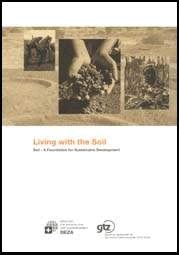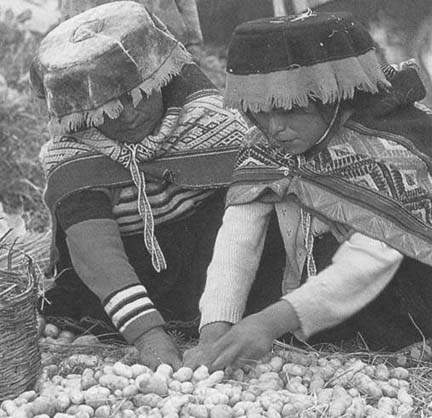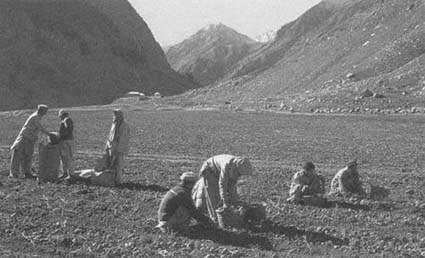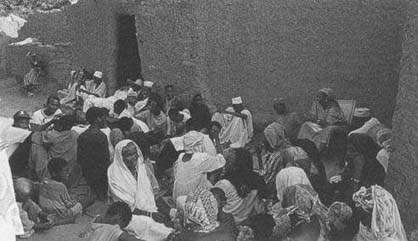
Promotion Strategies for Sustainable Soil Management[edit | edit source]
Utilising soils sustainably but more intensively
Crop farmers and pastoralists are first and foremost producers, and not nature conservationists. Soil protection is not a production target, nor is it a profitable undertaking. Consequently, soil protection must be combined with additional measures to increase the agricultural productivity of the land. Only then do soil protection measures also become attractive to farmers.
Creating incentives and additional income
Soil protection means expenditure. The costs incurred by farms should be offset by profits than can be realised in the short term. One possibility is the cultivation of high-value products, such as vegetables or fruit. Furthermore, macroeconomic fiscal instruments such as tax and price policy, can make sustainable soil management more competitive. Off-farm jobs and income reduce the pressure on soil resources. At the same time, capital is formed for investment in soil conservation.
Creating conducive frameworks
Whether and how much labour and capital a farm invests in maintaining soil fertility is dependent on various factors. Farm management decisions are determined to a very large extent by factors extraneous to the farm itself, i.e. the economic, social, legal and policy frameworks. The key factors here are secure use rights, access to purchasing and sales markets, access to credits, and access to information. Whilst it is not the place of development cooperation to alter frameworks within a partner country, it can deliver advisory services to governments in that connection.
Promoting research and technological development
The process of constant change in the environment, and in economic and social conditions, creates new problems and calls for fresh solutions. Development cooperation therefore promotes international and national agricultural research, also in the field of sustainable land use. Particular importance is attached to land-user participation in the development of technologies. Both the planning of trials, and the evaluation of results, are conducted jointly with farmers. This is designed to ensure that research really does address the land usersÂ' problems, and that those land users later go on to apply the developed technologies.
Strengthening land usersÂ' self-responsibility
This can take place in several ways. The decentralisation of state structures, and thus the transfer of decision-making to the regional and local levels, gives land users more scope to influence decisions that affect them. One example of this is land-use planning at the local level. Another is projects being planned jointly with land users, to ensure that objectives correspond to their needs. Promoted projects aim to stimulate and help enable land users to help themselves.
Fostering land users management capabilities
Most new technologies place heavier demands on land usersÂ' management capabilities. This applies just as much to the cultivation of green manures as to the efficient use of mineral fertilisers, or the maintenance of erosion control measures. It is therefore necessary that farmers have easier access to information and extension services.
A framework for soil protection
Degraded soils are symptomatic of unhealthy general conditions. Yet general conditions can be influenced, and rendered more favourable through appropriate measures. Such measures can generate scope for action which enables land users to pursue more sustainable land management.
Of the numerous factors conducive to sustainable soil management, some of the most important are:
- Inputs such as agricultural implements, fertilisers and seed are available on acceptable terms.
- Farms have access to credit systems.
- Produce can be marketed at profitable prices.
- Farmers have access to information via rural radio, newspapers, extension services or agricultural schools.
- Guaranteed land-use rights create a basis for long-term investment.
- Off-farm jobs create additional income which in turn can be invested in soil conservation.
- Off-farm income makes gavelkind, and thus a reduction in the size of farms, unnecessary.
- Agricultural products can be exported at fair prices.
- The industrialised countries refrain from subsidising the export of food surpluses.


